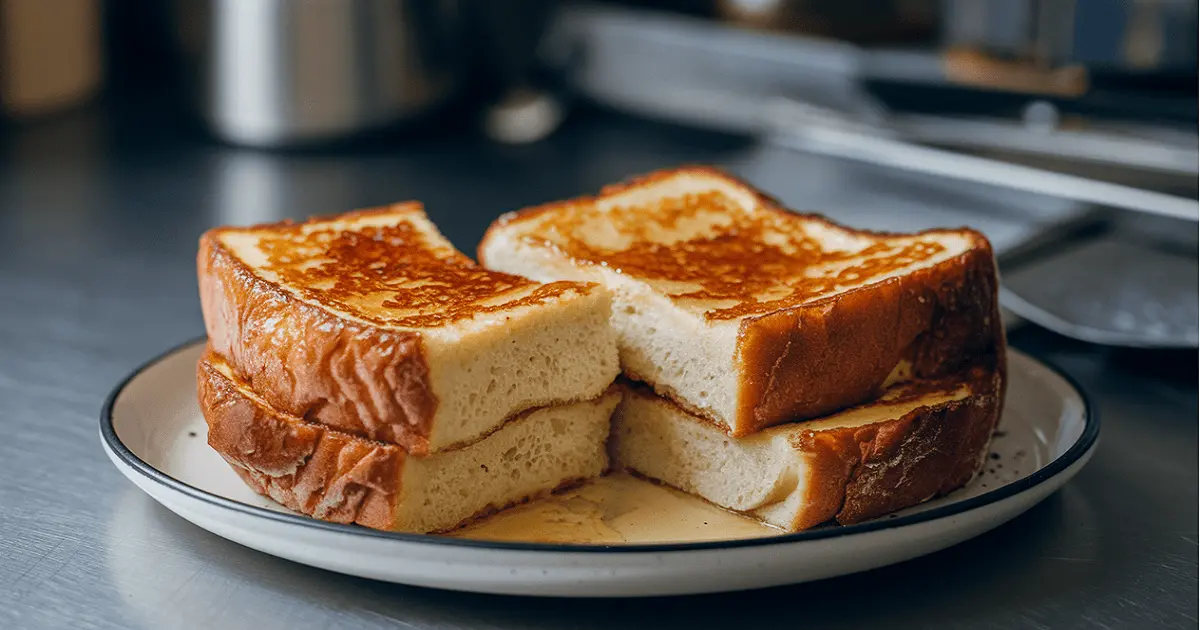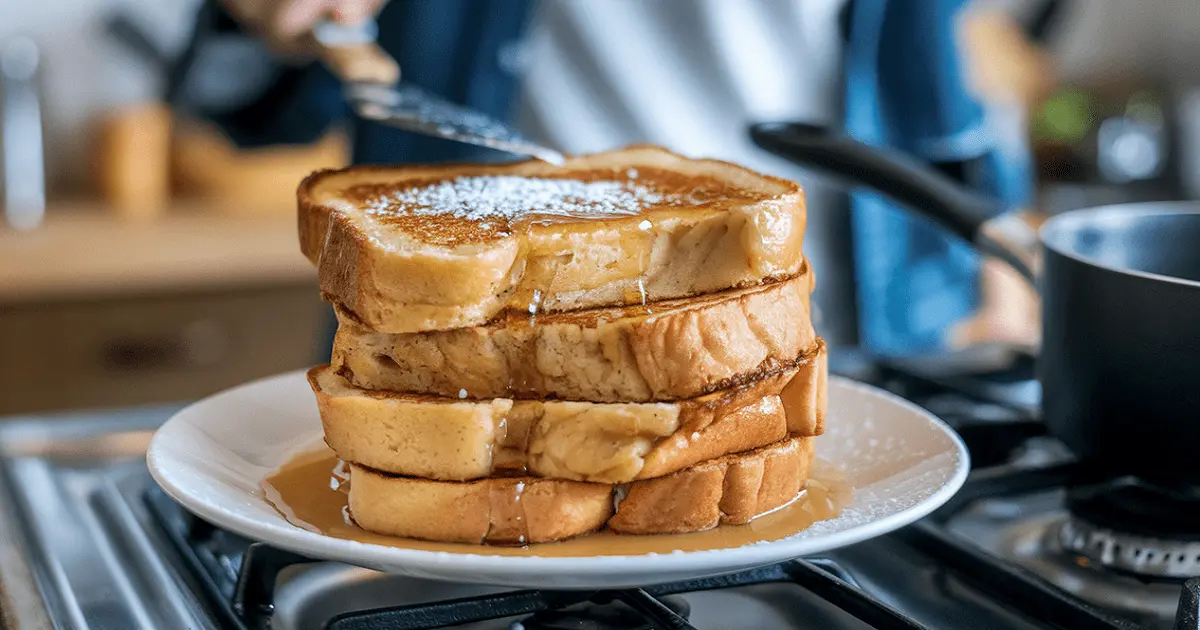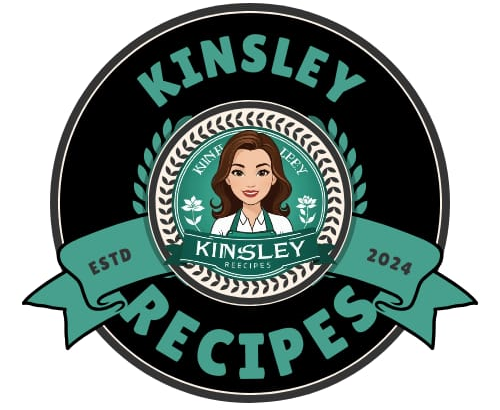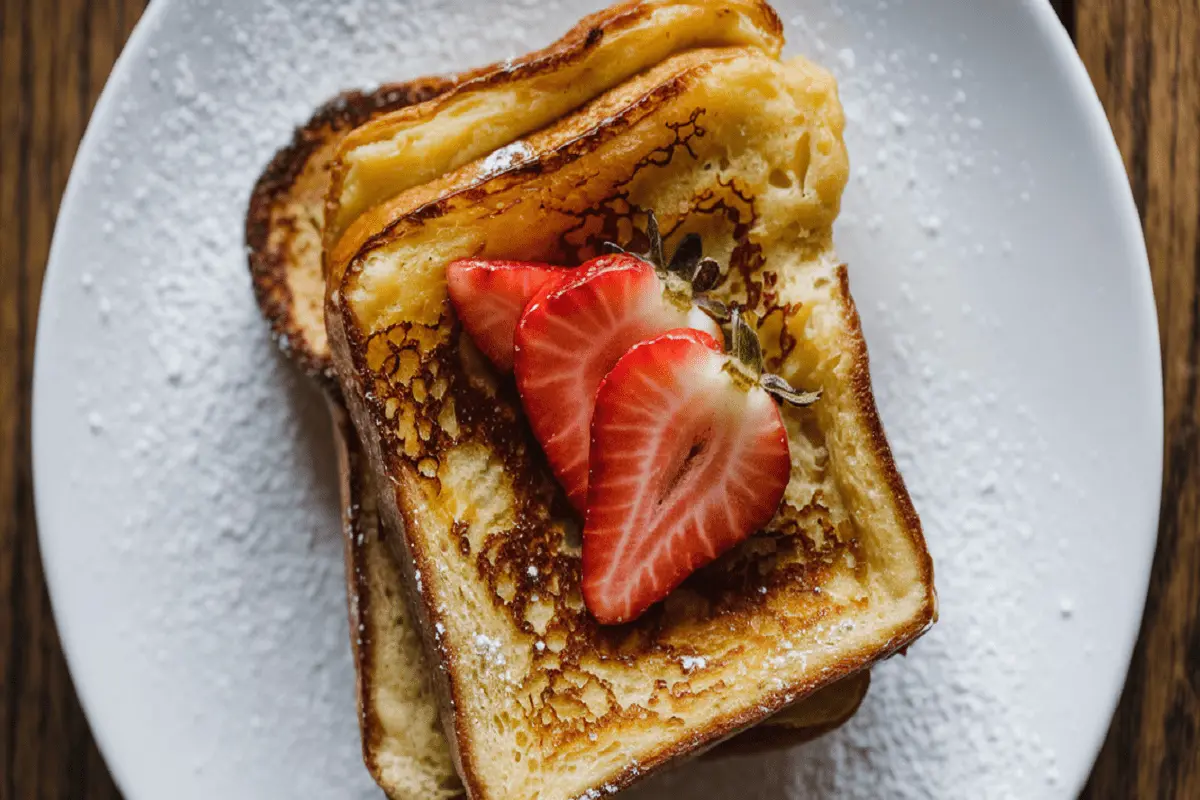French toast is a globally cherished breakfast dish. However, not everyone manages to get that perfectly fluffy texture that makes the dish truly exceptional. A fluffy French toast should have a golden, slightly crispy exterior, and a soft, airy interior that almost melts in your mouth. But if you’ve ever struggled with flat, soggy, or overly dense French toast, this guide is for you.
In this article, we’ll dive into the common mistakes that could be keeping your French toast from being light and fluffy, explore the best techniques to achieve the perfect texture, and cover frequently asked questions on how to troubleshoot the most common issues. We will also provide some creative topping ideas and internal links to related recipes that will complement your perfect French toast.
What Makes French Toast Fluffy?
Before we discuss how to fix any problems, let’s first understand what exactly makes French toast fluffy. The key is in the balance of ingredients and the cooking process. When the egg and milk mixture (batter) is properly absorbed by the bread, it should fluff up while cooking, creating an airy interior.Conversely, the exterior should have a slight crispiness. Achieving this balance is all about using the right ingredients, the right bread, and applying the correct techniques.
Key Ingredients for Fluffy French Toast
To achieve the perfect fluffy French toast, each ingredient plays a crucial role in both the texture and flavor of the final dish. Let’s dive into what makes each component important and how it contributes to the overall result:
Thick-Cut Bread
Indeed, not every type of bread is suitable for French toast.The best options are thick slices of brioche, challah, or sourdough due to their dense structure and ability to hold up during the soaking process. These types of bread absorb the batter well without disintegrating, which is essential for creating a fluffy interior and a slightly crisp exterior. Brioche and challah offer a slightly sweet flavor, while sourdough provides a more neutral base, allowing the batter and toppings to shine.
Pro Tip: For best results, use day-old or slightly stale bread. Fresh bread can become too soggy, while slightly stale bread absorbs the batter more evenly.
Eggs
Eggs are the backbone of the batter. They bind the other ingredients together and give the French toast its custard-like coating. Eggs also help the bread form that golden, slightly crispy exterior while keeping the inside soft and fluffy. The balance of eggs to milk is critical; too few eggs will make the batter too thin, while too many eggs can make the toast dense.
Pro Tip: Whisk the eggs thoroughly to break up the whites and create a smooth mixture that coats the bread evenly.
Milk (or a Substitute)
Milk adds richness and moisture to the batter. Whole milk is the best option because of its higher fat content, which enhances the creamy texture of the French toast. However, if you prefer to avoid dairy, almond milk, oat milk, or soy milk are great substitutes that won’t compromise the dish’s fluffiness. Just be sure to choose a milk alternative with a similar consistency to whole milk.
Pro Tip: If you want a richer, more indulgent flavor, consider using half-and-half or even heavy cream in place of regular milk.
Flour
Adding a small amount of flour—just about a tablespoon—can make all the difference. The flour helps to thicken the batter, ensuring it clings to the bread without being too runny. This step is often overlooked but is key to achieving that fluffy texture as it prevents the bread from absorbing too much liquid and becoming soggy.
Pro Tip: Sift the flour into the batter to avoid any lumps and create a smoother texture.

Flavorings
To elevate the taste of your French toast, it’s common to add flavorings like vanilla extract and cinnamon. Vanilla imparts a sweet, aromatic scent, whereas cinnamon contributes warmth and complexity.These simple additions turn your French toast from a basic breakfast item into a flavorful, comforting dish.
Pro Tip: You can also experiment with other spices such as nutmeg or cardamom to give your French toast a unique twist.
These ingredients, when used correctly, ensure that your French toast turns out fluffy, flavorful, and perfectly balanced in texture.
Common Reasons Your French Toast Isn’t Fluffy
There are several reasons why your French toast might not turn out as fluffy as you’d like. Exploring the most common issues and their solutions.
1. Using the Wrong BreadThe type of bread you use is crucial to achieving fluffy French toast. Thin slices or bread that is too fresh won’t absorb the batter properly and may become soggy or flat. For optimal results, use bread that is at least ¾ to 1 inch thick and slightly stale. Bread that is a day old works better because it has lost some moisture and will soak up the batter more efficiently.
Solution: Stick to thick-sliced breads like brioche or challah. These dense breads are ideal for French toast because they hold their shape during the soaking and cooking process. Avoid very soft or thin bread as it may fall apart.
2. Too Much Milk in the Batter
An overly liquid batter can cause the toast to become soggy instead of fluffy. This often happens when there is too much milk in the egg mixture. You need just enough milk to moisten the bread, but not so much that it turns the bread into a mushy mess.
Solution: Adjust your egg-to-milk ratio. A good rule of thumb is to use about ¼ cup of milk per egg. If you find that the toast is still coming out soggy, try reducing the milk slightly or adding a tablespoon of flour to thicken the mixture. The flour will help bind the liquid, resulting in a thicker batter that clings to the bread better.
3. Not Soaking the Bread Long Enough
If you don’t give your bread enough time to soak in the batter, the inside may remain dry, and you won’t achieve that desirable fluffy texture. However, over-soaking the bread can make it too mushy.
Solution: For thick-sliced bread like brioche or challah, soak each slice for about 20-30 seconds on each side. You want the bread to absorb enough batter to become creamy inside but not so much that it loses its structure. If you’re using thinner bread, reduce the soaking time accordingly.
4. Incorrect Cooking Temperature
One of the most common reasons for French toast not turning out fluffy is cooking it at the wrong temperature. If the heat is too high, the outside will brown too quickly, leaving the inside undercooked. If the heat is too low, the bread will become soggy before it has a chance to brown.
Solution: Cook French toast on medium heat. This will give the bread enough time to cook through without burning the exterior. You want a golden, crispy crust with a soft interior. Make sure to preheat your skillet or griddle before adding the soaked bread.
Step-by-Step Guide: How to Make Fluffy French Toast
Now that we’ve covered the common mistakes, let’s walk through the correct process for making fluffy French toast.

1. Choose the Right Bread
- Opt for thick-cut bread like brioche, challah, or sourdough. If your bread is fresh, leave it out overnight to let it dry out slightly, as this will help it soak up the batter without becoming too soggy.
2. Prepare the Batter
- In a large bowl, whisk together eggs, milk, and a tablespoon of flour to thicken the batter. Add vanilla and cinnamon for extra flavor. The batter should be smooth and slightly thick, ensuring it coats the bread evenly.
3. Soak the Bread
- Immerse each bread slice in the batter for 20 to 30 seconds per side. This allows the bread to absorb enough liquid without becoming mushy.
A helpful resource to explore different bread options and their impact on the texture of French toast Best Breads for French Toast.
4. Cook the French Toast
- Warm a lightly oiled skillet or griddle over medium heat. Place the soaked bread on the skillet and cook for 2-3 minutes on each side, until golden brown and slightly crispy. For an extra fluffy interior, you can transfer the cooked toast to an oven preheated to 200°F for 5-10 minutes to finish cooking.
Creative Toppings for Fluffy French Toast
Once your French toast is cooked to golden, crispy perfection, it’s time to take it to the next level with some delicious toppings. The beauty of French toast lies in its versatility—whether you prefer classic flavors or want to try something more adventurous, the options are endless. Toppings can enhance both the flavor and texture of the dish, turning a simple breakfast into a culinary masterpiece. Below are some classic and creative options to inspire your next French toast feast.
Classic Toppings
- Maple Syrup: A staple for any French toast lover. The rich, golden syrup drizzles down the layers, soaking into the bread and adding a deep, caramel-like sweetness. Maple syrup pairs perfectly with both the fluffy interior and the crispy edges of the toast.
- Powdered Sugar: For those who like their French toast on the sweeter side without overpowering it, a dusting of powdered sugar is the perfect addition. It adds a light sweetness and also elevates the presentation by giving your toast a bakery-style finish.
- Fresh Fruit: Adding fresh fruits like berries, bananas, or sliced apples introduces a burst of natural sweetness and a refreshing contrast to the richness of the toast. Berries such as strawberries, blueberries, and raspberries not only enhance the taste but also provide a colorful, visually appealing dish.
Creative Toppings
- Nut Butters: Almond butter, peanut butter, or cashew butter bring a creamy, nutty richness to the toast. These spreads add protein and healthy fats, making your French toast more filling and nutritious. For an extra touch, you can warm the nut butter slightly before drizzling it over the toast for easier spreading.
- Yogurt and Honey: If you’re looking for a lighter topping with a tangy twist, Greek yogurt paired with a drizzle of honey is an excellent choice. The yogurt adds creaminess, while the honey provides a gentle sweetness that complements the natural flavors of the French toast without being overly sugary.
- Homemade Fruit Compote: For a more luxurious topping, try making a fruit compote by simmering berries, apples, or even peaches with a bit of sugar and a splash of lemon juice. The fruit will break down into a thick, jam-like consistency that adds a rich, sweet flavor to your French toast. This option is great for those who prefer a warm, decadent topping that still retains the natural sweetness of the fruit.
For more unique and inspiring ideas, check out our topping suggestions for French toast.
Frequently Asked Questions

1. Why Is My French Bread Not Fluffy?
Using bread that is too thin or soft can result in flat French toast. For best results, choose thick slices of brioche or challah, and let the bread dry out slightly before using it.
2. Why Is My French Toast Too Soft?
Over-soaking the bread or using too much milk in the batter can cause the toast to be too soft. Adjust the egg-to-milk ratio and be mindful of soaking time to avoid this problem.
3. How to Make French Toast Not Mushy?
To avoid mushy French toast, make sure the bread is slightly stale and thick-sliced. Cook on medium heat to allow the interior to set without burning the outside.
4. How Moist Should French Toast Be?
French toast should be moist inside but not wet. The exterior should have a slight crispness, while the inside remains soft and airy.
Final Thoughts
Achieving perfectly fluffy French toast depends on a combination of using the right ingredients and applying the proper cooking technique. The type of bread you choose plays a crucial role in how well the batter absorbs and how the toast cooks. The batter must be balanced with the correct ratio of eggs to milk and slightly thickened with flour for the best texture. But it’s not just about the ingredients—cooking the French toast at the right temperature ensures the outside becomes golden and crisp while the inside stays light and airy.
Whether you’re making breakfast for your family or preparing an impressive brunch, mastering these techniques will help you consistently produce fluffy and delicious French toast. Don’t hesitate to experiment with various toppings, like fresh fruit, nut butters, or compotes, to create a dish that feels new each time. Adding your personal touch with different flavors or presentation can elevate a classic French toast into a memorable and customizable meal suited to any occasion.
For more breakfast ideas, be sure to explore our breakfast recipes for inspiration.

